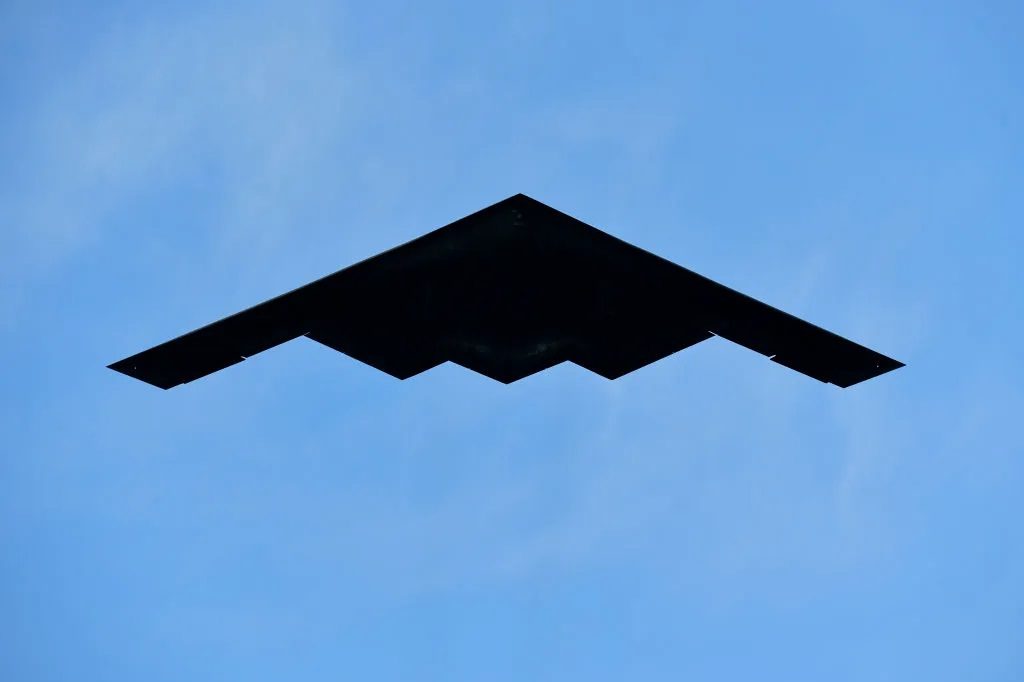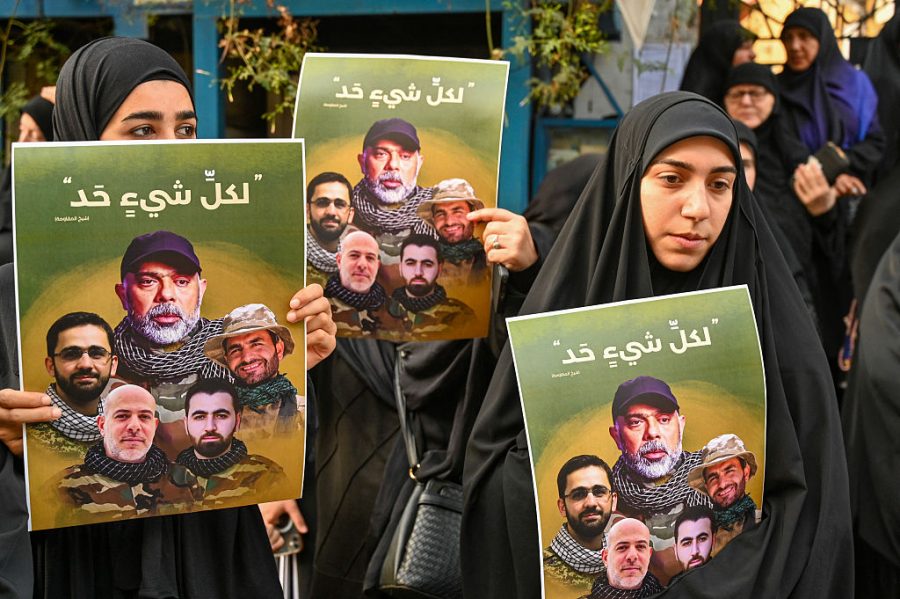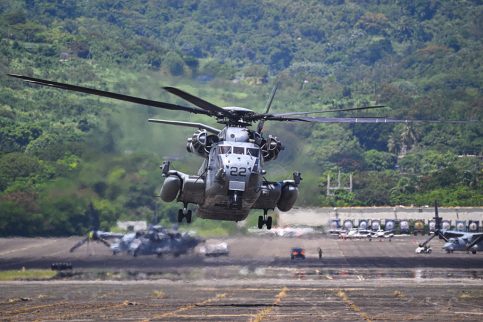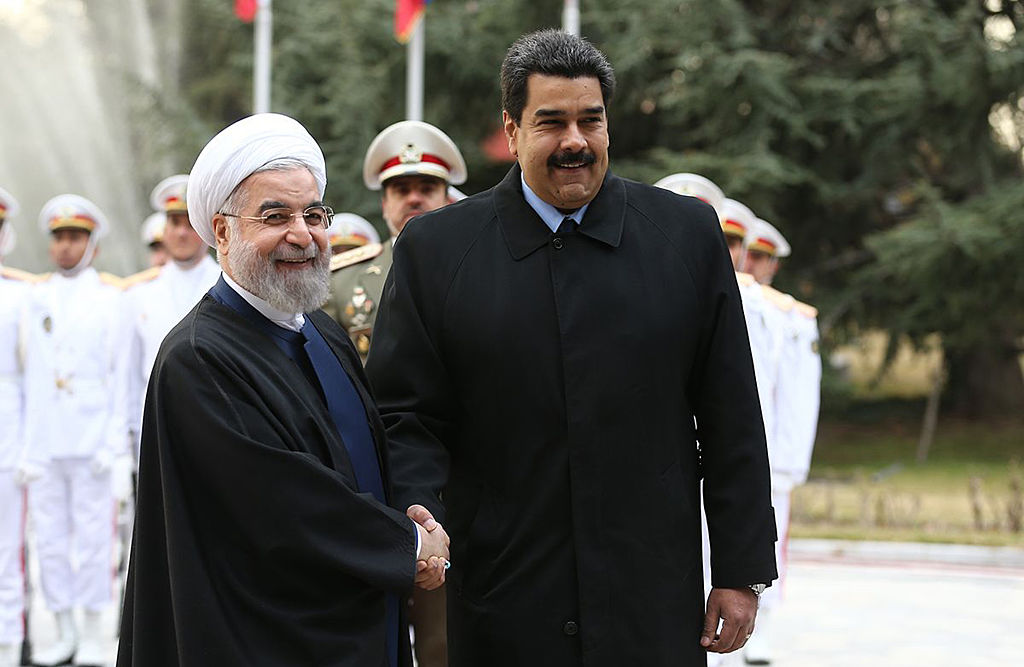Bombs send messages. Yesterday it was announced that the United States sent B-2 Spirit stealth bombers to hit underground Houthi weapons stores. The aim was to frighten Iran.
Using America’s most potent bomber to hit bunkers controlled by a militia force which has no sophisticated air defense systems might seem over the top — a superpower sledgehammer to crack an irritating nut.
However, the early morning raid was far more than a strike on a militia force which has been a persistent threat to Israel and to western commercial shipping in the Red Sea, the Bab Al-Mandeb Strait and the Gulf of Aden.
The Pentagon is not confirming what type of munition was dropped by the B-2s. But this bat-winged aircraft, part of the US triad of nuclear delivery systems, is also the only platform in the US Air Force capable of carrying the mighty 30,000lb Massive Ordnance Penetrator or MOP which, with its dense steel casing, can plough through 200 ft of earth, rock and reinforced concrete before exploding.
The MOP, technically a GBU-57, has never been dropped in anger. Only twenty were ever built, and they were designed purely to be able to penetrate further underground than any other weapon on earth, apart from a nuclear bomb.
So, whether or not one of these huge bombs — and each B-2 can carry two — was used against the underground Houthi target, the message was loud and clear to Tehran, backers and financiers and armorers to the Houthis: the B-2 stealth bomber with its immense conventional payload capacity is waiting in the wings.
The timing of the B-2 raid, and the announcement of the stealth bombers’ involvement by the Defense Secretary Lloyd Austin, as opposed to a run-of-the-mill press release from Central Command, made the attack all the more significant.
Iran, and Washington, and the whole western world, is waiting for the Israelis to retaliate for the launching by Tehran of around 200 ballistic missiles against Israel on October 1.
President Biden has pleaded with Benjamin Netanyahu not to attack either Iran’s nuclear facilities, for fear of uncontrollable escalatory repercussions, or its oil industry plants because of the potential consequences for oil prices; and Netanyahu has apparently given assurances that although the retaliation will be significant, his bombers won’t go for nuclear or oil targets.
This is why last night’s B-2 raid on the Houthis was so much more than taking out underground bunkers stocked with Iran-supplied weapons. This was a direct message to Tehran., and a reminder to Netanyahu that if the time comes when Iran decides to leap ahead and build a nuclear bomb, the US, and only the US, has the means to deliver long-term damage to sites which are buried deep inside mountains.
The statement from Lloyd Austin, a former commander of Central Command, drove home the message:
Today, US military forces, including US Air Force B-2 bombers, conducted precision strikes against five hardened underground weapons storage locations in Houthi-controlled areas of Yemen. This was a unique demonstration of the United States’ ability to target facilities that our adversaries seek to keep out of reach, no matter how deeply buried underground, hardened or fortified.
He added: “The employment of Air Force B-2 Spirit long-range stealth bombers demonstrates US global strike capabilities to take action against these targets when necessary, anytime, anywhere.”
Last night’s strike was the first time the B-2 had been used in an operation since the war in Afghanistan. If a MOP was dropped, it would not just be a demonstration of this weapon’s capability but it would also force Iran to review its calculations about the bomb’s penetration powers and whether their nuclear facilities would be vulnerable.
Iran’s principal nuclear site at Natanz is burrowed in a mountain, and even the MOP might have difficulty in destroying the underground facility. The bomb was designed to target deeply-buried sites and has a 6,000lb high-explosive warhead. The key element of the bomb is its ability to delay detonation, with a modified fuse design, until it has reached the most vital part of the buried target.
The Houthis also have weapons sites buried in mountains but they are not as sophisticated as Iran’s facilities, and their air-defense systems are crude by comparison with Iran’s Russian-built S-200s and S-300s which guard the facility at Natanz and at other nuclear plants.
If the MOP wasn’t used on this occasion, the B-2s would have carried highly effective bunker-busting Joint Direct Attack Munitions (JDAMs) with 2,000lb warheads and/or the GBU-72 bomb which has a 5,000lb warhead. They might have been sufficient to destroy the five sites mentioned by Austin.
However, whatever weapons were on board, the deployment of B-2s against the Houthi was supposed to strike fear in Iran. These bombers, each costing more than $1 billion, were designed to evade enemy air defense radars and their use in combat in Kosovo, Libya, Iraq and Afghanistan proved their worth as a unique bombing platform.
This article was originally published on The Spectator’s UK website.

























